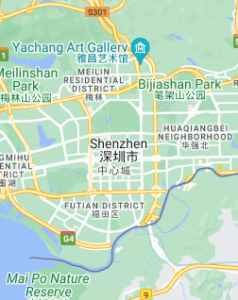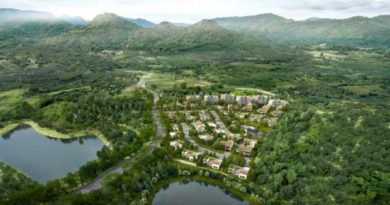OPINION-COLUMN | “Shenzhen Dream”, the Cambodian Version? (Part 1)
Shenzhen: From fishing village to global metropolis. Hinrich Foundation “Be Ambitious”


The father of China’s modernization, reforms and opening-up, Chinese Vice Premier Deng Xiaoping paid an official visit to the United States in January 1979. He was the first Chinese leader to do so after the official establishment of diplomatic relations between the two countries. He stressed that he came to the US to learn everything advanced. He visited some cutting-edge industrial and high-tech projects in America.
While listening attentively, he was envisioning China’s own industrial modernization. At a plant of Ford, he said that China needed to develop its own automobile industry and he would give it a time frame of 20 years. At the Johnson Space Center in Houston, he started to envisage how China may catch up with advanced countries in its space program. At an assembly plant of Boeing 747 jets, he pointed out that as its economy grew, it was important for China to design and produce its own jumbo jets.
He was amazed that Ford factory could produce 50 cars per hour, when, at the time, China was only able to manufacture 13,000 a year.
Deng Xiaoping was ambitious in bringing all that he saw in terms of advanced technologies in the US to China.
To achieve these dreams, Deng Xiaoping was instrumental in opening up China to absorb foreign capital, corporate management system and technologies despite the fear of negative impacts on socialist system. Under his watchful eye, China embarked on daring reforms including, among others, the establishment of four “special economic zones” along the Southeastern coast of China, with Shenzhen, Shantou, and Zhuhai located in Guangdong province and Xiamen located in Fujian province.
His seemingly impossible dreams back in 1979 when China was still under-developed all became true four decades later or well before that.
When President Xi Jinping visited Qianhai, which is a small bay area in Shenzhen city in 2012, he encouraged the city to dare to be the first and the pioneer of innovation; to become a blank paper, in which beautiful pictures can be drawn. President Xi designated Qianhai as the first stop of his inspection trips, stressing Qianhai’s mission of “leveraging Hong Kong, serving the Chinese mainland, and influencing the world.”
Back in the 1980s, the area was mudflat and had nothing but stones. Literally stones. The photos at Qianhai Exhibition Center proved that fact.
Now, the area is home to the Qianhai Shenzhen-Hong Kong Modern Service Industry Cooperation Zone (Cooperation Zone). It is a pioneering business zone to promote modern service industries, including finance, logistics, information technology, and science and technology, as well as to strengthen collaborative ties between Guangdong, Hong Kong and Macao in the Greater Bay Area (“GBA”). Initially sprawling over 15 km2, the Cooperation Zone is set to expand eight-fold to 121 km2.
In the same spirit, if we talk about dreams, should Cambodian leaders tell Chinese leaders that Cambodia wants to send Cambodians to space with Chinese taikonauts (or astronauts) in the next 20 or 30 years?
The question is rather extreme. It tells the gap between realities and dreams. In fact, dreams can have many forms and levels. They can be an illusion or romantic fantasies; they can be ambitions with clear goals. But when we talk about dreams, there are always some unachievable or impossible elements, something beyond reach or far from realities.
Among many dreams for nation-building, Cambodia has a dream, which is to create another Shenzhen in Preah Sihanouk Province.
“Shenzhen dream”, the Cambodian version.
People can put a lot of question marks toward this dream, but the inspirational drive should not be suppressed.
Long times ago, the government had identified Preah Sihanouk Province as one of the poles of economic growth triangle, after Phnom Penh and Siem Reap, but the growth had been sluggish compared to the other two economic poles.
When policy-makers started to prepare the Industrial Development Policy (IDP) in the years 2012-2013, Sihanoukville city was still a sleepy town. Envisioning Cambodia’s industrialization from 2015 to 2025, they discussed, within the IDP framework, to a great extent on the strategies to develop and transform Preah Sihanouk Province into a multi-purpose Special Economic Zone.
IDP has identified four concrete measures, and the fourth one proposed to “develop and transform Preah Sihanouk Province into a model multi-purposed Special Economic Zone, following the concept of Special Administrative Region. Under this concept, a master plan, legal and regulatory framework and other administrative arrangements will be developed and designed to provide full authority and jurisdiction for mobilization of resources, talents, investments and businesses to develop the province to become an economic pole and industrial, trade and tourist hub in line with sustainable and environmentally sound development concepts, and to be recognized as the ASEAN Green Industry and Metropolitan City in the future.”
This specific paragraph was a direct reference to Shenzhen model even if IDP did not explicitly mention Shenzhen.
And here comes the problem of reality.
Despite having IDP in 2015, the development of the master plan for Preah Sihanouk Province did not start until 2019 because it was difficult to find a serious developer as well as to allocate resources. It was only in 2019 that the government designated the Urban Planning Design Institute of Shenzhen (UPDIS) to develop the master plan. This was no coincidence. UPDIS was recommended by the United Nations Industrial Development Organization (UNIDO) to shoulder this task because this institution had practical experience in developing the second master plan for Shenzhen (1996-2010), and that specific master plan won the Patrick Abercrombie Prize for Urban Planning and Design in 1999.
When UPDIS was starting to prepare for the master plan, Covid-19 wreaked havoc on the whole world. According to the original plan, it is expected that the draft master plan will be developed within this year but it remains to be seen whether more time is needed to accommodate more internal consultations among various ministries and sub-national administrations before reaching common ground on future direction of the master plan. Beside there is probably a need to fill in the time-gap that was taken away by Covid-19.
“What is Shenzhen model?”
There is no consensus among scholars and practitioners about the so-called Shenzhen model.
A simplified explanation provided that over the span of 40 years, evolution of Shenzhen’s economy can be divided into four decades. In the first ten years, Shenzhen relied on the production of electronic consumer goods such as TV, laptops and mobile phones. The second decade focused on real estate. The third one relied on advanced technologies while the fourth decade was characterized by the increased importance of finance, stock, and insurance industries.
This explanation is like the climb-up of ladder of industrialization and global value chain.
If we are to find a more consistent and coherent explanation for the development of Shenzhen, the analysis on government’s planning can be more reliable. Up until today, Shenzhen has developed four master plans; the first master plan (1986-2000), the second master plan (1996-2010), the third master plan (2010-2020), and the fourth master plan (2020-2035).
If we are to find commonalities about each master plan, then it would be the identification of the so-called “strategic emerging industries”, and the consistent effort to make Shenzhen more “special” than other administrative areas. By identifying strategic emerging industries, Shenzhen wants to stay ahead of time by attracting new investments that fit well to Shenzhen’s development stage. To that end, the government has constantly devised and revised various incentives in accordance with the needs of those strategic emerging industries.
Sim Vireak is the Strategic Advisor of the Asian Vision Institute (AVI) and a PhD Candidate of Jinan University (Guangzhou)
TRIVIA:.
Shenzhen
Description
Shenzhen, in southeastern China, is a modern metropolis that links Hong Kong to China’s mainland. It’s known for its shopping destinations, including Luohu Commercial City, a massive mall with a vast array of wares, from tailors’ custom clothing to faux designer bags. The city also features contemporary buildings, such as the 600m-tall skyscraper Ping An International Finance Centre, and a number of amusement parks. ― Google


 Memento Maxima Digital Marketing
Memento Maxima Digital Marketing


 Ads by: Memento Maxima Digital Marketing
Ads by: Memento Maxima Digital Marketing






